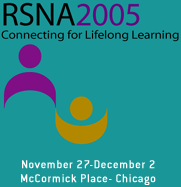
Abstract Archives of the RSNA, 2005
Christian Dullin, Presenter: Nothing to Disclose
Matthias Funke MD, Abstract Co-Author: Nothing to Disclose
Silvia Obenauer MD, Abstract Co-Author: Nothing to Disclose
Jeannine Missbach-Guentner, Abstract Co-Author: Nothing to Disclose
Friedrich D. Knollmann MD, PhD, Abstract Co-Author: Nothing to Disclose
Frauke Alves MD, Abstract Co-Author: Nothing to Disclose
Eckhardt H. Grabbe MD, Abstract Co-Author: Nothing to Disclose
et al, Abstract Co-Author: Nothing to Disclose
Introducing a new method for highly accurate volume measurement of structures in flat panel volume-ct data sets and to demonstrate their quality. Analysing tumour progression in murine models puts high demands on volume measurement, because of the very small size of the tumours (less than 1mm³), because partial volume effects must be considered.
The method can be divided in three parts:
1. Data acquisition – A FP-VCT (GE Medical Systems) was used. It consists of a modified circular CT gantry and two amorphous silicon flat-panel X-ray detectors each of 20x20 cm2 with a matrix of 1024x1024 200 µm detector elements. Standard z-coverage is 4.21 cm per rotation at a rotation time of 8 sec. Scanning parameters were 80 kVp and 100 mA. A modified Feldkamp algorithm was used for image reconstruction resulting in an isotropic high resolution volume data set. A sphere phantom (three spheres made of nylon, Teflon and PP with diameters of about 30mm), a Lung nodule-phantom made of plasticine and some subcutaneous tumours in murine models were scanned.
2. Segmentation – To segment the structure of interest a modified region-growing algorithm was used.
Volume measurement – The method is based on the well known marching cubes algorithm, modified in the way that it does not produce triangle meshes but a tetrahedron decomposition of the structure.
Our studies on this phantoms show very high conformity between measured and analytical volume. The mean error is about one percent. First appliacation of the method on subcutaneous tumours in mice models also yields very good results compared with commercial software.
With the introduced method we are able to measure the volume of smallest structures in VP-VCT data sets. Objective and quantitative in vivo tumour progression studies in mice models are now realizable.
Dullin, C,
Funke, M,
Obenauer, S,
Missbach-Guentner, J,
Knollmann, F,
Alves, F,
Grabbe, E,
et al, ,
Subvoxelspace Volume Measurement of Flat Panel Volume-CT (FP-VCT) Data Sets. Radiological Society of North America 2005 Scientific Assembly and Annual Meeting, November 27 - December 2, 2005 ,Chicago IL.
http://archive.rsna.org/2005/4414428.html

